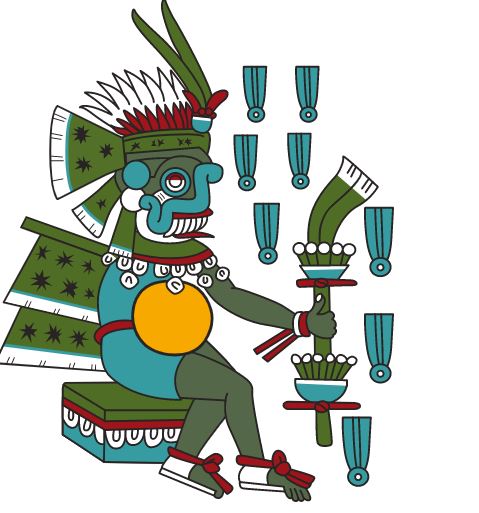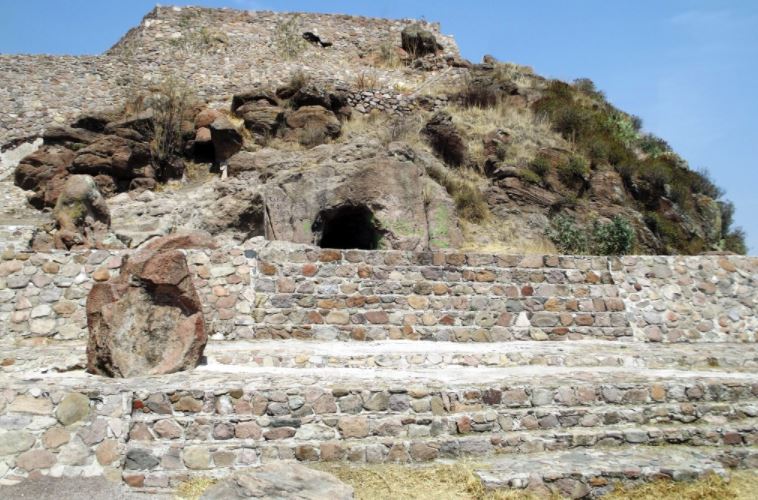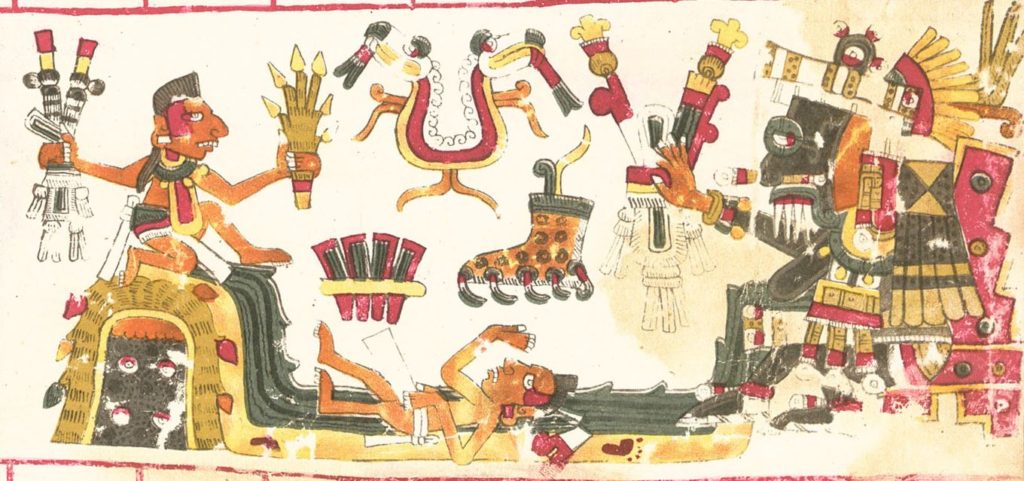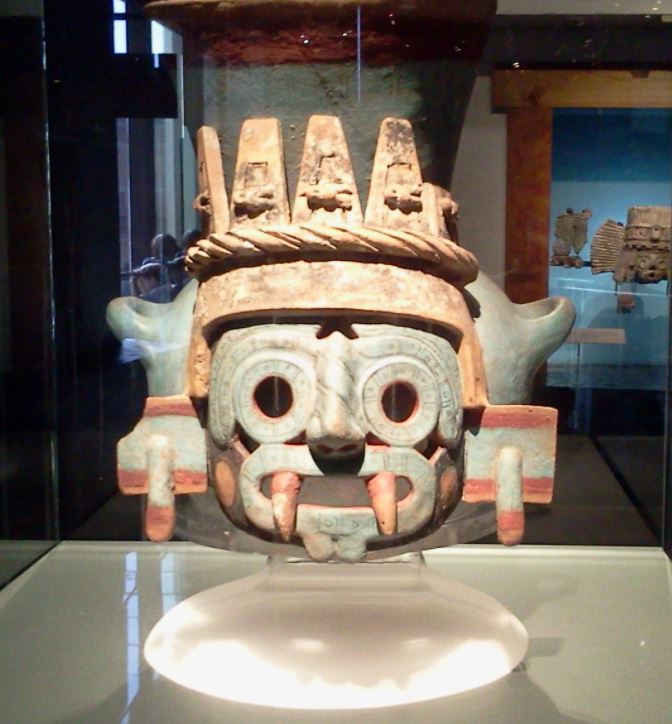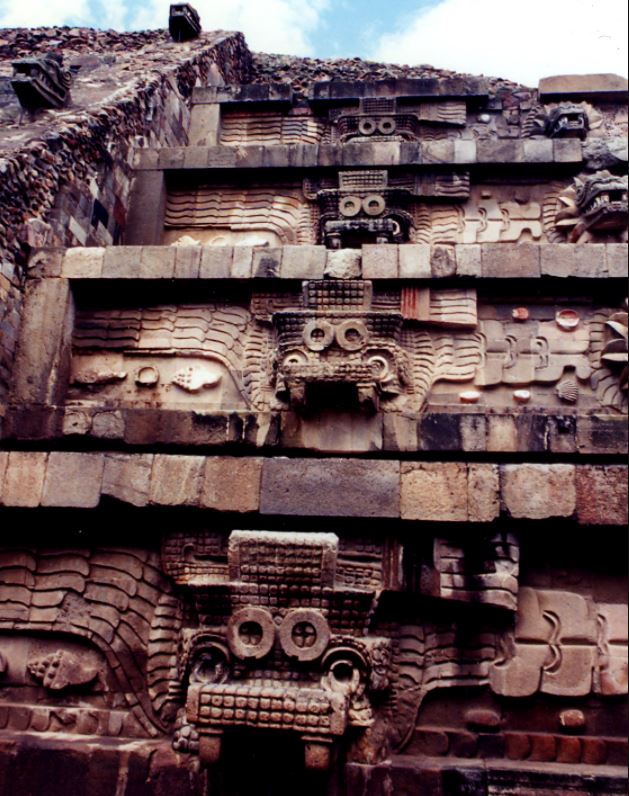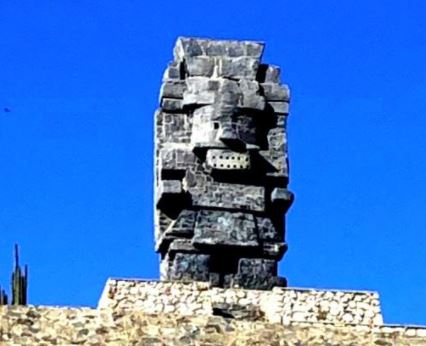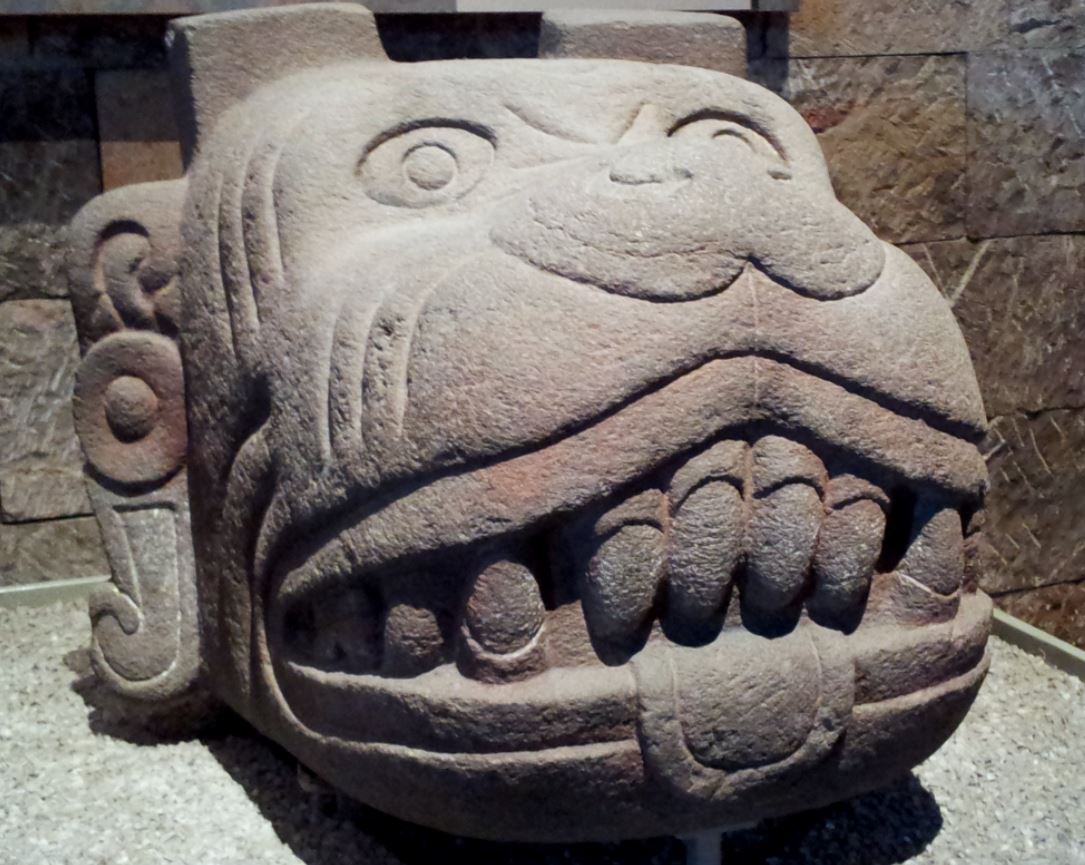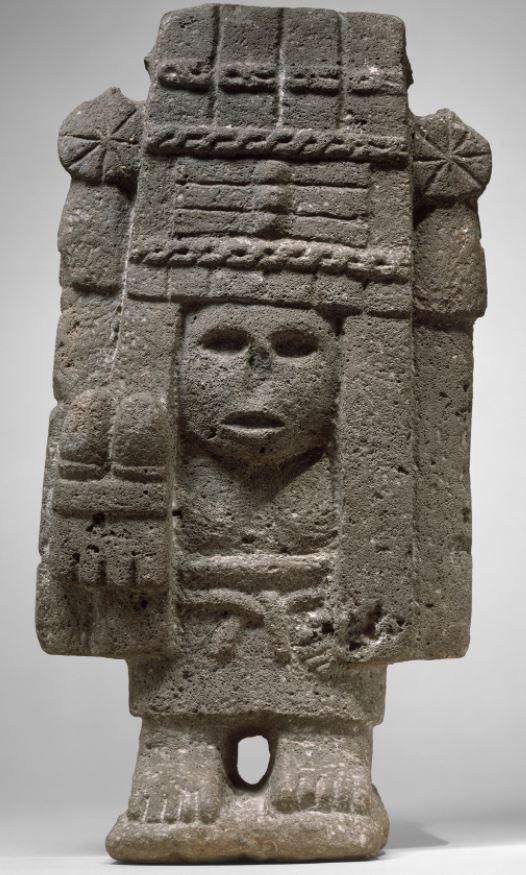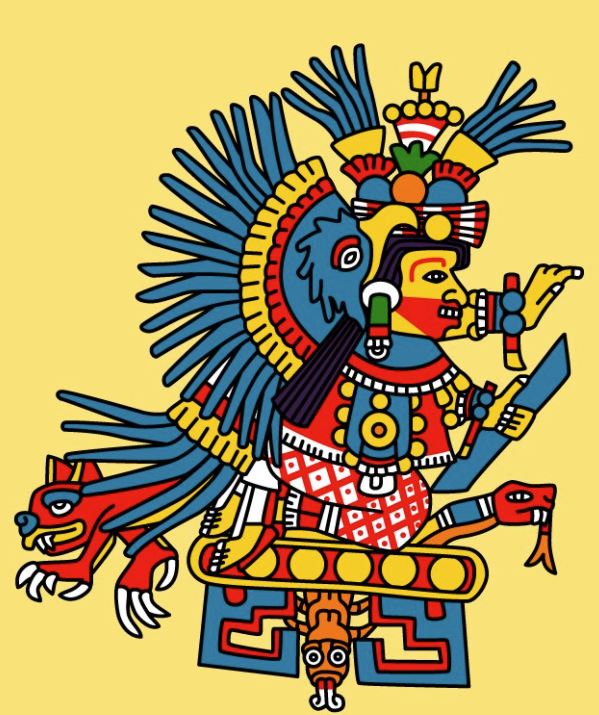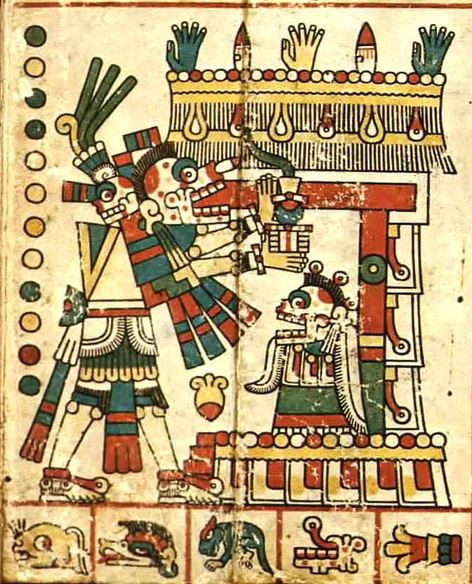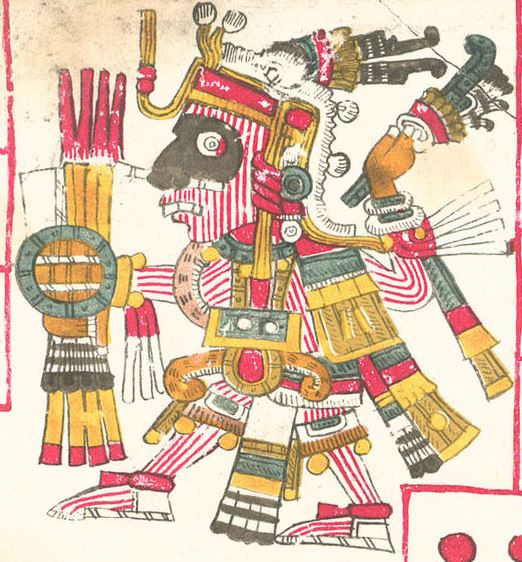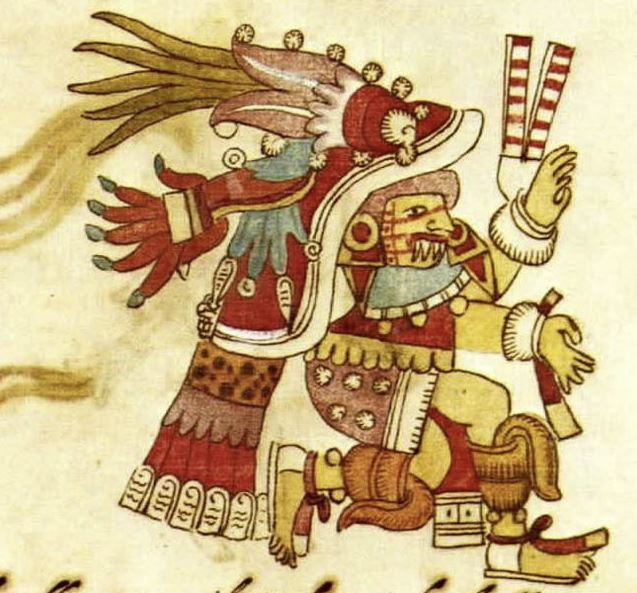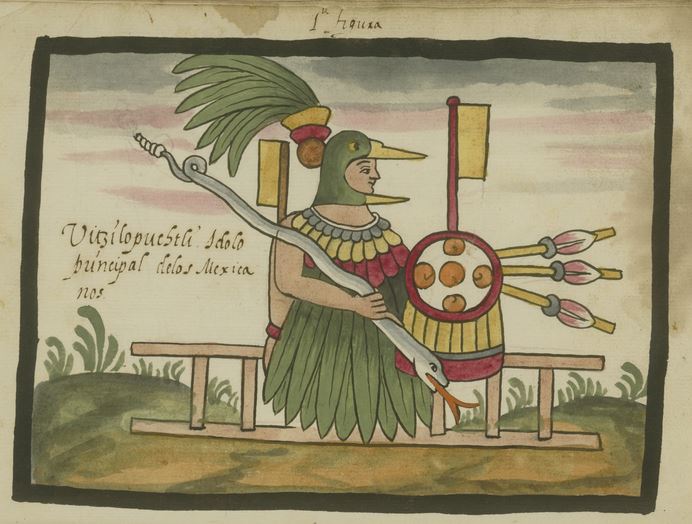Aztec God Tlaloc, the God of Rain
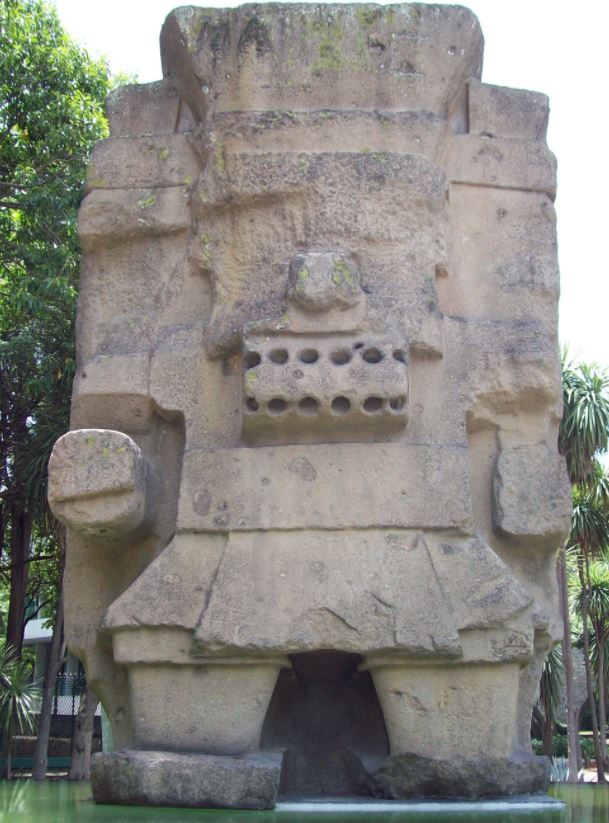
As it occurred with many other religions, all the phenomena related to the sky such as the rain and thunder were attributed to a deity that governs all these concepts.
In the Aztec religion, the main god who was in charge of this phenomenon was Tlaloc and it was pretty popular among their civilization. Such was his popularity that even when the Aztecs were conquered by the Spanish and they forbid the Aztec religion, the god Tlaloc was still worshipped.
A representation of one of the Aztec god Tlaloc images
What is Tlaloc the god of?
Tlaloc, the well-known Aztec god, is pronounced as T-la-loc.
As a key figure in the Aztec pantheon, Tlaloc represented the god of rain, water, mountains, thunder, and lightning.
Personified as a human man having circles surrounding his eyes with fangs like a jaguar, Tlaloc god of rain was an important god symbolizing essential elements and possessing power over agriculture.
Aztec god Tlaloc meaning: Origin of his Name
The name of the Aztec god Tlaloc means “earth” in the Nahuatl language, Tlali, and the –oc means “something on the surface.”
In Tenochtitlan, the capital city of the Aztecs and the place now known as Mexico City, twin temples were constructed for worship and rituals for two Aztec gods.
One was for Huitzilopochtli and the other to worship the Aztec god Tlaloc. The stairs that lead up to Tlaloc’s temple were painted white and blue like water, the main elements of the god.
Located
on the north side of the pyramid-shaped temple, Tlaloc, the Aztec god of rain, symbolized the summer solstice and was a central figure in the indigenous beliefs of the Mesoamerican cultures.
The Aztecs offered sacrifices and worshipped during the rainy season with elaborate rituals at Tlaloc’s temple in Tenochtitlán, honoring him as one of the foremost Aztec deities of thunder and rain.
The Aztec god Tlaloc, also known as the god of storms, has another temple in his honor on top of the majestic mountain known as Mount Tlaloc, located just outside of Tenochtitlán.
This site is one of the earliest and most significant religious sites associated with Tlaloc, embodying his powers over the elements.
The Mount Tlaloc, a temple dedicated to the Aztec god of rain
A myriad of sacrifices, including offerings of children, was made to Tlaloc.
These acts were thought to appease the god, ensuring his benevolence in the form of rain and protecting the people from his wrath in the form of thunderstorms and droughts.
During the months of Atlcahualo, Tozoztontl, and Atemoztli in the Aztec solar calendar, Tlaloc was worshipped extensively, receiving offerings of flowers and other sacrifices.
This veneration was crucial to prevent long periods of drought and to generate a productive rainy season, supporting the Aztecs’ agricultural endeavors and their survival.
The Aztecs believed engaging with Tlaloc through these rituals was essential for a balanced environment, where the dual aspects of his nature – the nurturing rain and the destructive storms – were acknowledged and respected.
Tlaloc’s symbols, including jaguars and serpents, often depicted in the art and iconography of Chichen Itza, were revered as embodiments of his energy and power.
A piece of Tlaloc art
History of the Aztec god Tlaloc and most important myths
Best remembered for his representation in the Aztec Creation Myth, Tlaloc god of rain ruled the third Sun and was often connected to Mazatl, a deer, in many Aztec legends.
The
Aztec god Tlaloc was born during the creation of the Aztecs when Quetzalcoatl and Huitzilopochtli destroyed Cipactli, the monstrous reptile. This event marked the beginning of Mesoamerican religion in ancient Mexico and the emergence of Tlaloc as a pivotal deity.
Tlaloc was the ruler of the Tlaloque, the rain, weather, and the little Tlalocs, also called the mountain gods. Chalchiuhtlicue is Tlaloc’s sister in most myths but has been represented in some Aztec myths as his wife and or mother.
She was vital for appeasing the gods and maintaining harmony within the Aztec empire.
Chalchiuhtlicue is the goddess of rivers, oceans, and floods. However, if she is his wife, she is not his only one, reflecting the complex family relationships among the gods and symbols of pre-Columbian Mesoamerican cultures.
The Aztec god Tlaloc’s other wives were Xochiquetzal, the goddess of the flower and fertility, and Matlalcueitl, a deity representing rain. These relationships underscore the integration of gods and rites within the indigenous peoples of the sixteenth century New Spain.
The wives of the Aztec god Tlaloc
In one Aztec myth, Tezcatlipoca abducted Tlaloc’s first wife, Xochiquetzal, which is why he took a second wife, Matlalcueitl. Nevertheless, Tlaloc’s life was surrounded by the element of water and representative of life and growth, dependants on water.
This dependency is a theme deeply rooted in the Florentine Codex and the Templo Mayor artifacts.
All of his wives and family had power over water elements, rain, rivers, oceans, floods, the flower, and fertility that complement his powers over rain, agriculture, and mountains, illustrating the interconnectedness of Mesoamerican deities such as the Totonac, the Zapotec, and the Maya.
The jars of Tlaloc god of rain
The popular mythology of Tlaloc depicts the god as having four giant jars for each of the cardinal directions, North, South, East, and West. These jars held not only the essential rains but also the powers of drought, disease, and frost that were central threats to the Aztec capital and its people.
The Aztecs believed that it would rain when the Aztec god Tlaloc broke the water jars within the mountains and the sound of thunder was just Tlaloc smashing the jars. This mythic representation links Tlaloc to both the nurturing and destructive forces of nature, crucial for cooking and sustaining life.
A representation of one of the jars or Tlaloc vessels
Powers of the Aztec god Tlaloc
The Aztecs believed that Tlaloc held power over the earthly elements that control the weather, rain, mountains, lightning, and the production of agriculture.
As the god of water, rain, and thunder, Tlaloc was offered sacrifices from the Aztecs to bring seasonal rains, not droughts and bad weather.
The Aztecs also believed in heaven that had thirteen levels, each ruled by one or more deities.
The Aztec god of rain Tlaloc ruled the first level of heaven, Tlalocan.
Humans that entered heaven due to water-related deaths like drowning, getting struck by lightning, or diseases caused by water, were sent to Tlalocan.
Symbology of Tlaloc
Tlaloc was most often symbolized as the mountains and was believed to rule the Tlaloque, a combination of the rain, weather, and the gods of the mountains, which were referred to as Little Tlalocs or Tepictoton.
Ears of corn and corn stalks were often kept in Aztec homes to represent Tlaloc and his power over agriculture.
Tlaloc symbol: The Eagle and animal features
His animal sign was an eagle and he was commonly depicted with jaguar fangs instead of human teeth and accompanied by snakes and deer.
Tlaloc’s counterpart in the Mayan mythology was the god, Chac.
Both gods symbolized rain and lightning, representing the four cardinal directions.
Temple of Tlaloc: The Aztec god Tlaloc is represented in his temple of Tenochtitlan
Additional Tlaloc Aztec god facts
Tlaloc appears in Aztec art on Tlapacoya vases as a god with a bolt of lightning.
However, impressively large stone statues and ornate temples to worship and praise Tlaloc were built by the Aztecs.
During the late 1880s, an enormous statue of Tlaloc was found in Coatlinchan, also referred to as San Miguel Coatlinchan.
The monolith became known as Piedra de Los Tecomates.
Locals believe that the statue has prophetic powers. Carved indentions shaped like gourds collect water foreseeing rain. During the dry season of 1963, it was moved to Chapultepec Park in Mexico City.
Symbolically, on the same day the statue of Tlaloc arrived in its new location, the worst thunderstorm caused the skies to rain for many days leaving locals to relate the supernatural powers of Tlaloc with the terrible storm.
.

